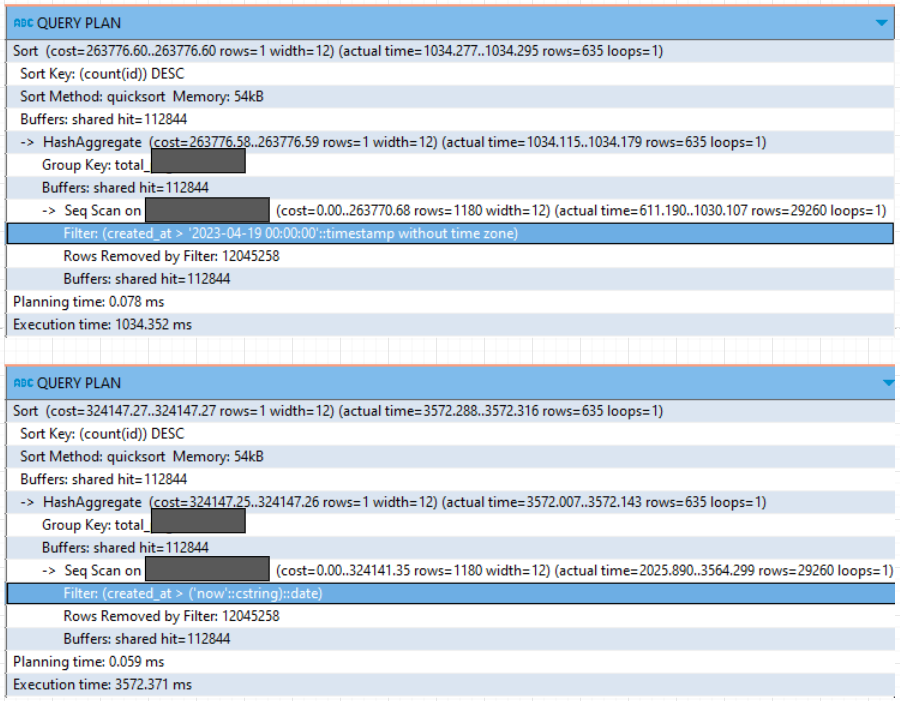I’m evaluating a query performance and came to a curious finding….
I’m trying to get the count of items created today grouped by a column
Pretty simple SQL query:
SELECT
count(id), total_units_sold
FROM public.items x
WHERE
created_at > current_date
GROUP BY total_units_sold ORDER BY 1 DESC;
The interesting finding is that when I run the same query using the current_date as the string 2023-04-18 the result is considerably faster;
To give some context on table size, there’s 32.000 results in that query and the whole table have about 12.000.000 recods
Execution time when using current_date:
Execution time when using 2023-04-18:
So the question here is:
Why does this happens?
Notes:
- The table is not indexed on
created_atand I cannot change that on the moment - Result of the EXPLAIN for both queries (Sorry for the hidden parts)
Result of the explain





2
Answers
The problem with
current_dateexisted in older Postgres versions. Here is a discussion from eight years ago on pgsql-performance.The best option is to upgrade Postgres to the latest version. Alternatively, use
now()::dateinstead ofcurrent_dateas a workaround.Because
created_atis atimestamptype, butcurrrent_dateis adatetype, postgres tends to coerce the column type to the constant value in the query before comparing. This means that every row is read from disk and the created_at value cast to a date, which is relatively expensive.Instead, use
current_timestamp, whose type is the same as the column:If you have an index on
created_at, it’s a candidate for use when the types of the comparison match.